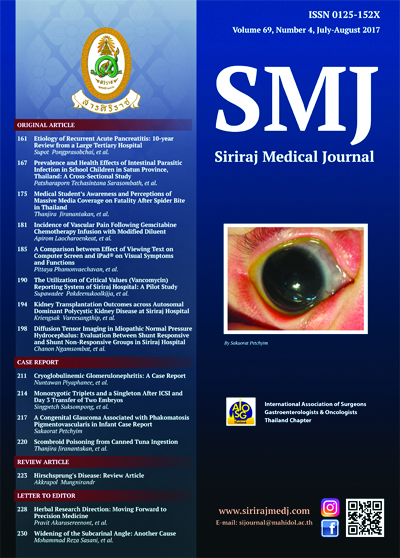Scombroid Poisoning from Canned Tuna Ingestion
Keywords:
Scombroid poisoning, histamine intoxication, scombrotoxin, tryptase, fish poisoningAbstract
Fish allergy is well recognized, however scombroid poisoning or histamine fish poisoning, which exhibits identical clinical manifestations, is rarely diagnosed. We report the case of a 28-year-old female who, after eating tuna spaghetti, experienced a flushed face, generalized erythema, angioedema, shock and tachypnea requiring adrenaline, chlorpheniramine, ranitidine, and hydrocortisone injections. Her symptoms completely resolved within
3 hours. Her condition was diagnosed as scombroid poisoning based on temporality, normal serum tryptase levels (2.7 ng/mL) at 2.5 hours and at her baseline (2.5 ng/mL, 60 hours), as well as negative results on skin-prick test and re-challenging one can of the same branded-tuna orally. The revelant public health authorities were notified and a restaurant-visit was made, although the tuna can from which the patient’s dish was prepared had been discarded,
hence a histamine analysis of the tuna was unavailable. This case underscores the need for awareness of scombroid poisoning and public interventions regarding food safety.
Downloads
Published
How to Cite
Issue
Section
License
Authors who publish with this journal agree to the following conditions:
Copyright Transfer
In submitting a manuscript, the authors acknowledge that the work will become the copyrighted property of Siriraj Medical Journal upon publication.
License
Articles are licensed under a Creative Commons Attribution-NonCommercial-NoDerivatives 4.0 International License (CC BY-NC-ND 4.0). This license allows for the sharing of the work for non-commercial purposes with proper attribution to the authors and the journal. However, it does not permit modifications or the creation of derivative works.
Sharing and Access
Authors are encouraged to share their article on their personal or institutional websites and through other non-commercial platforms. Doing so can increase readership and citations.











